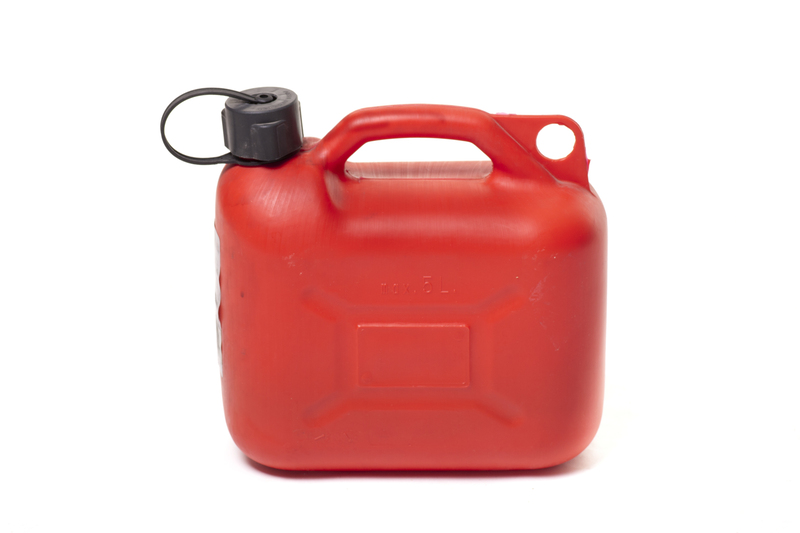Expert Guide to Storing Your Sofa for the Long Haul
Posted on 26/05/2025
Expert Guide to Storing Your Sofa for the Long Haul
Sofas are more than just a piece of furniture--they're an investment in comfort, style, and functionality. Whether you're downsizing, remodeling, moving, or simply want to extend your sofa's lifespan, storing your sofa properly is essential. This comprehensive guide to long-term sofa storage will walk you through everything you need to know, from the prep work to final placement. Taking the right steps not only preserves your sofa's appearance and value but also ensures it's ready for use when you retrieve it, no matter how long it's been in storage.
Why Proper Sofa Storage Matters
Storing a sofa for a lengthy period isn't as simple as tucking it away in a garage or storage unit. Without proper care, your beloved sofa can suffer from mold, mildew, pest infestations, fabric damage, and warping. Long-term couch storage done right keeps your piece protected from environmental harm, and ensures longevity and optimal condition when brought back into service.
- Preserves structural integrity of frames and fabrics
- Prevents mold and mildew growth
- Reduces pest or insect issues
- Protects value and resale potential
- Saves money on cleaning and potential repairs

Preparing Your Sofa for Long-Term Storage
Step 1: Deep Clean the Sofa
The most crucial phase of storing your sofa long-term is cleaning. Stains and crumbs can set in and attract pests. Here's how to deep clean, based on sofa material:
- Fabric Sofas: Vacuum thoroughly. Use upholstery cleaner, following manufacturer instructions.
- Leather Sofas: Wipe down with a solution for leather, then condition it to prevent cracking.
- Microfiber Sofas: Brush and spot-clean with a gentle solvent-based cleaner.
- Check hidden areas, such as under cushions and along seams, for any debris.
Always let your sofa dry completely before moving to the next step. Damp sofas can develop mold or musty odors in storage.
Step 2: Disassemble If Possible
When possible, disassemble your sofa to make storage easier and to prevent stress on joints or upholstery. Remove:
- Cushions and pillows
- Legs (if they unscrew easily)
- Any detachable frames or arms
Store hardware in labeled bags and tape them securely to a sofa part or keep them in a safe box.
Step 3: Protect With the Right Covers
Never use plastic wrap directly on sofas for long-term. Plastic traps moisture, leading to mold growth. Instead, use:
- Breathable furniture covers
- Quilts or blankets
- Old sheets
Cover every surface, and secure the cover to keep out dust and pests, while allowing airflow.
Choosing the Best Storage Option
Climate-Controlled Storage Units
The safest option for long-term sofa storage solutions is a climate-controlled storage facility. These units regulate temperature and humidity, which is crucial for preventing mold, mildew, and warping of frames.
- Ideal for areas with temperature swings or high humidity
- Best for valuable, antique, or leather sofas
- Prevents musty smells and material degradation
Standard Storage Units
Non-climate-controlled units can work if you take additional precautions, especially for short periods. Be sure to use desiccant packs, store your sofa off the ground, and double-check there are no leaks in the facility.
At-Home Storage Tips
If you must store a sofa at home, choose:
- A finished basement (that's dry)
- Spare rooms with minimal sunlight
- Garages only if you have a dehumidifier running
Place your covered sofa on blocks or a pallet to keep it off the concrete and allow airflow underneath.
Expert Tips for Long-Term Sofa Care in Storage
Elevate Your Sofa
Never store your sofa directly on the floor. Use wood pallets, cinder blocks, or moving dollies. This prevents moisture from seeping up and allows air to circulate, further reducing mold and mildew risk.
Avoid Stacking Heavy Objects
It can be tempting in storage to pile items on your sofa. However, this can crush cushions, distort frames, and grind dust into the upholstery.
- Keep your sofa clear of weight
- Store pillows and cushions in ventilated bags nearby, not on top
Use Pest Deterrents
Long-term couch storage can attract pests looking for a cozy home. Always:
- Add pest repellent sachets, such as cedar chips or lavender bags
- Inspect storage space for droppings or insect trails before placement
- Consider natural repellents over harsh chemicals for fabric protection
Maintain Airflow
Proper ventilation is essential. Position the sofa with some space around it--don't wedge it tightly against walls or boxes.
Check Periodically
If possible, check on your stored sofa every few months. Look for:
- Signs of moisture, mold, or mildew
- Pest activity
- Shifting covers or exposed fabric
This allows you to catch potential issues early and take corrective action, ensuring the longevity of your sofa in storage.
Special Considerations by Sofa Type
Storing Leather Sofas Long-Term
- Condition the leather thoroughly before storage to prevent drying and cracking.
- Use soft, breathable covers--never plastic.
- Avoid direct sunlight on stored leather, as it may cause fading.
Storing Sectional Sofas
- Completely disassemble the sectional into its components.
- Label each piece clearly for easy reassembly.
- Store pieces vertically, if possible, to save space and reduce weight on frames.
Sofa Beds or Recliners
- Lock all moving mechanisms.
- Store mattresses in upright position, separately if detached, to avoid sagging.
- Check for hidden storage areas where moisture or pests could hide.
Common Mistakes to Avoid in Sofa Storage
- Don't skip cleaning--leftover food and stains attract pests and set over time.
- Avoid wrapping tightly in plastic--it suffocates upholstery and traps moisture.
- Don't store in damp, unventilated spaces--this is the number one cause of moldy sofas.
- Ignore climate conditions at your peril--regions with high humidity are a threat to furniture integrity.
- Don't forget insurance--if your sofa is valuable, get storage insurance to protect your investment.
When It's Time to Retrieve Your Sofa
When you're ready to bring your sofa back from storage, reverse your steps with care:
- Remove covers and check upholstery for any signs of pests or moisture.
- Vacuum and air out the sofa before use.
- Reattach components (legs, arms, cushions) with hardware you set aside.
- Spot clean or deodorize with fabric spray, if needed.
- Let the sofa reacclimate to your home environment for a day before heavy use.

Frequently Asked Questions about Long-Term Sofa Storage
Can I store my sofa in the garage?
Only if the garage is dry and you use a dehumidifier. Concrete floors wick moisture, so always elevate and use breathable covers.
How long can I safely store a sofa?
With the right preparation and climate-controlled storage, a sofa can remain in prime condition for several years or even a decade.
What if my sofa has a musty smell after storage?
Air out the sofa in sunlight for several hours. Use fabric fresheners and consider professional upholstery cleaning for deep odors.
Is it worth getting storage insurance for my sofa?
For valuable, heirloom, or antique sofas, absolutely. Insurance can protect against unforeseen damage, loss, or pests while your furniture is in storage.
Conclusion: Invest in Your Sofa's Future
Long-term sofa storage doesn't have to be stressful or risky. By investing a little extra time and care today, you can guarantee your sofa remains just as beautiful and functional tomorrow--whether that's in a year or a decade. Always use climate-controlled storage if possible, prepare your furniture carefully, and avoid shortcuts.
A sofa is more than furniture--it's a comfort zone and a piece of your home's character. Treat it well, and it will provide years of relaxation when you need it again.
Thinking about storing other pieces of furniture for the long haul? The same principles of cleaning, protecting, climate consideration, and regular inspection apply across the board. With this expert guide, your furniture's future rests in safe hands.



